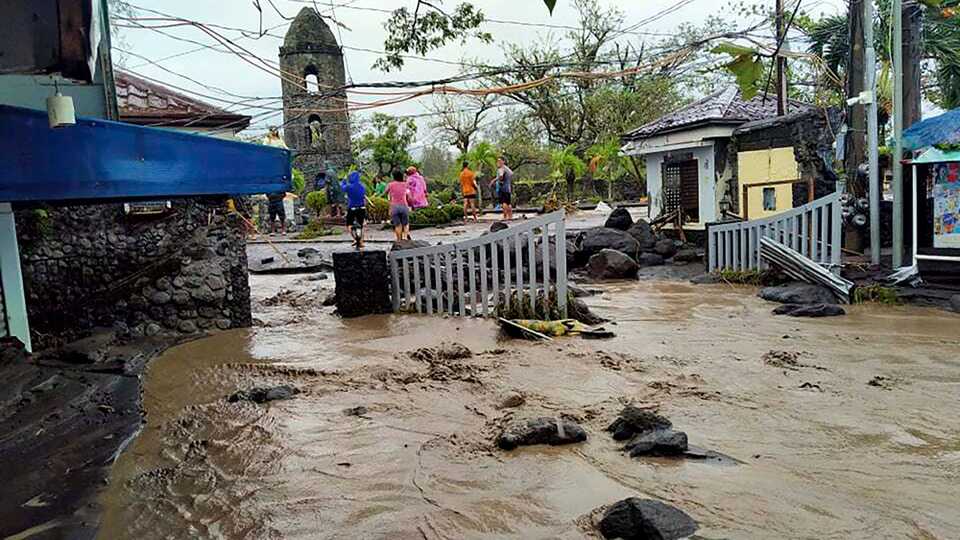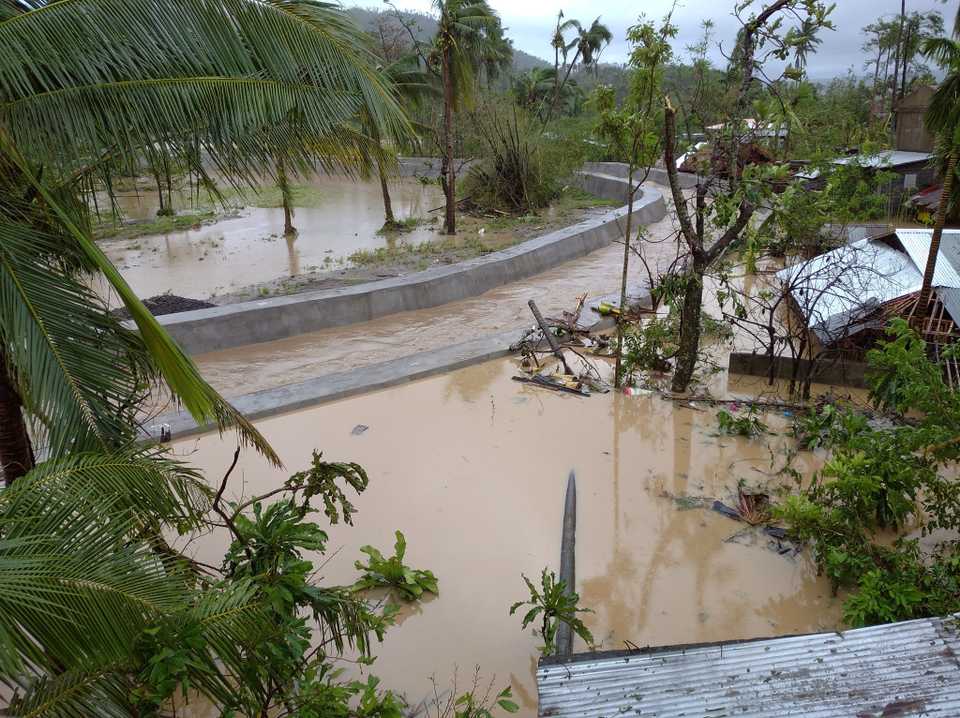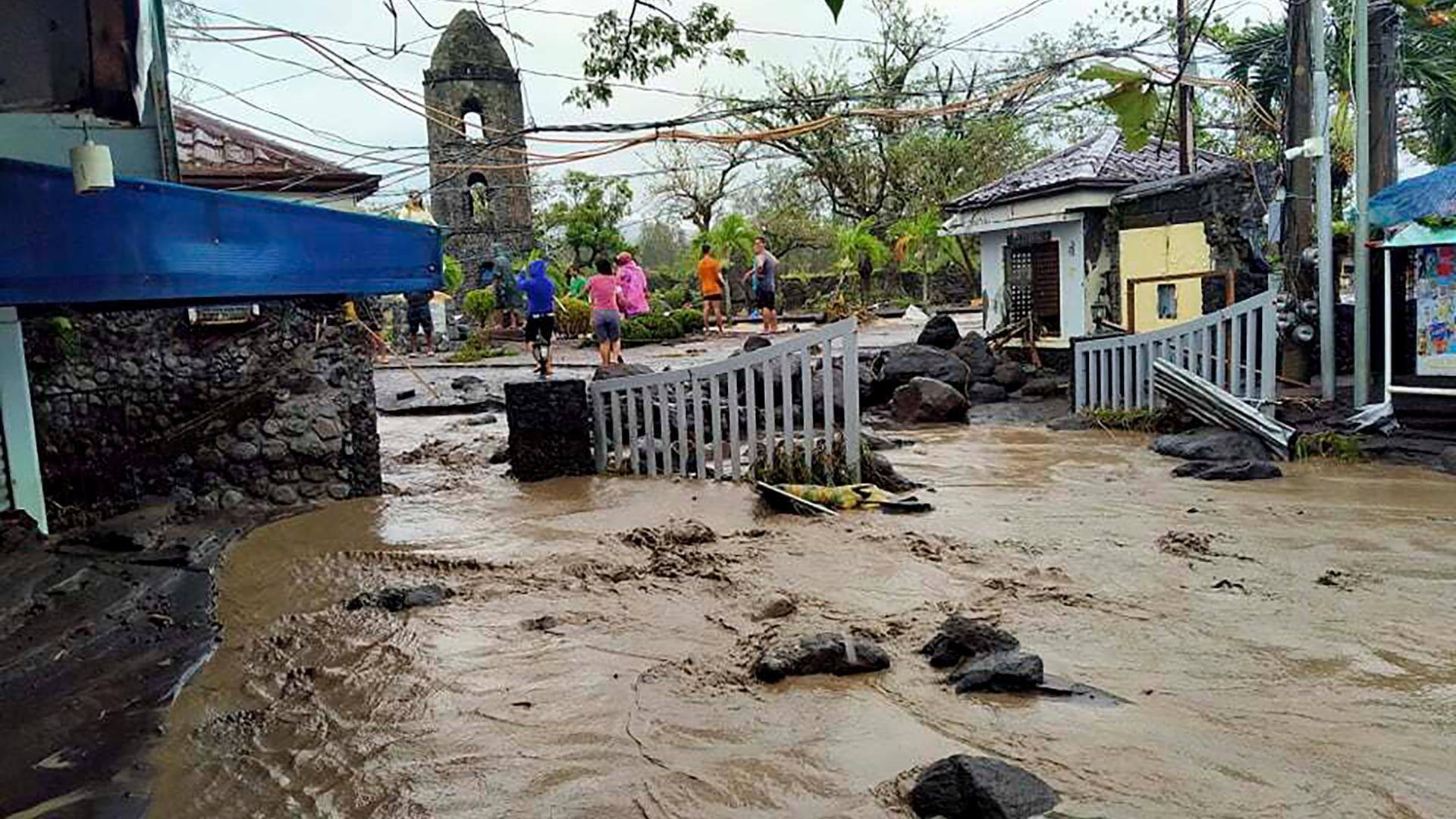
At least 10 people have died and three others are missing after Typhoon Goni, the world’s strongest typhoon this year, barrelled through the south of the Philippines’ main island of Luzon.
More than 300 houses were buried under volcanic rocks and mudflows from Mayon Volcano in severely hit Albay province in the Bicol region, a lawmaker said.
Storm surges hit some coastal towns, while rivers overflowed and dikes were destroyed, submerging several villages in Bicol.
The dead and missing were all in Bicol, including nine in Albay, the Office of Civil Defence said.
Goni was a “super typhoon” when it made landfall on Catanduanes Island before dawn, packing maximum sustained wind speeds of 225 kilometres per hour.
It was downgraded a few hours later as it swept across Luzon and reduced intensity as it headed towards the capital Manila, where the sprawling city of 12 million was bracing for strong winds in the evening.
“Destructive winds and intense rainfall” were affecting areas in the typhoon’s path, including provinces near the capital, the state weather forecaster warned in its latest update.
Goni comes a week after Typhoon Molave hit the same region of the natural disaster-prone archipelago, killing 22 people.
At least seven people were killed in Albay province, Civil Defence said in a statement.
READ MORE: Evacuations as Philippines braces for world’s strongest 2020 typhoon
#Typhoon #GONI (#RollyPH) is rampaging through #Philippines. Center is currently over Quezon & heading W. The good news: rough terrain of these islands has significantly weakened typhoon. But it’ll still bring dangerous conditions to rest of Calabarzon, Mimaropa, & #MetroManila. pic.twitter.com/2EAk9JzRXL
— Josh Morgerman (@iCyclone) November 1, 2020
Landslides
Several of the victims died in rain-induced landslides of volcanic ash that police said engulfed numerous houses in two adjacent villages near the active Mayon volcano in the province.
“We have recovered three bodies and are looking for three more,” said Major Domingo Tapel, chief of police in Guinobatan town.
The roofs of at least two evacuation centres were torn off by the force of the wind, while floods inundated some villages.
“The winds are fierce. We can hear the trees being pummelled. It’s very strong,” Francia Mae Borras, 21, told from her home in the nearby coastal city of Legazpi.

Mass evacuation
Nearly 400,000 people have fled their homes, most of them to evacuation centres, civil defence said.
Various officials in affected areas have reported power cuts, which are disrupting telecommunication services and hampering efforts to assess the extent of the damage.
“Our roads have a lot of debris from the mountains such as branches and sand, some which came from Mayon (volcano). Some roads are unpassable,” said Carlos Irwin Baldo, the mayor of Camalig, near Legazpi.
In Manila, the airport was closed and residents were evacuated from low-lying slum areas at risk of being inundated by several-metres-high storm surges.










Discussion about this post